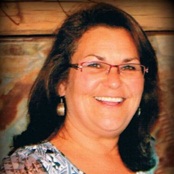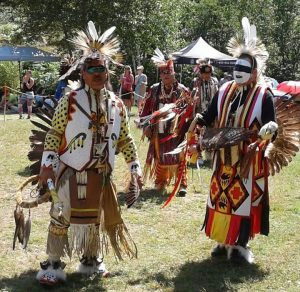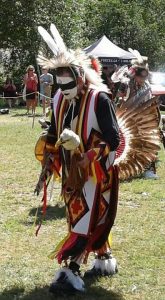The Shoganosh have failed in protecting Mother Earth and the Anishinaabe.
In my article last week, I wrote that Indigenous Peoples have been forced to live within the Indian Act and rely on non-Native solutions. Time and time again, the Shoganosh have suggested their own “solutions” that have been consistently incompatible with our Indigenous lifestyles.
Ever since contact, the Indian Agent and his successors have outright failed at supporting our communities and people in too many ways to list. The few solutions offered to Indigenous Peoples since contact rarely respect those that have come before us, and almost never look to protect those yet to come. 7 Generations Philosophy is inclusive of those who came before us, those of us here today, and those to follow in our footprint in the future.
The Anishinaabe are the protectors of Mother Earth, the time has come for us to make a stand and protect the planet for 7 Generations.
Let’s be honest, the Shoganosh have not only fallen miserably short in their treatment of the Indigenous Peoples, they have neglected to honour their own Treaties and have failed Mother Earth in so many ways. What the Federal Government has tried to do with First Nations and Inuit peoples of Canada has failed the smell test of time. Most of the suggestions on how we should live have not even remotely approached solving the problems that we face today, faced in the past, or need to be addressed our future. They simply have not taken into consideration how the Anishinaabe have lived, and live, within our own culture and traditions.

How can anyone foreign to another’s culture remotely suggest how one should live when the other knows nothing of our culture and traditions? Can we maturely look at the failures and the successes of the past and finally be honest with each other as Canadians?
It makes no sense for Non-Natives to tell the Anishinaabe people of Turtle Island how we should live or how we should protect our own lands. How does that happen? Who are you to tell us?
How would you know how we have lived in harmony with Mother Earth since the beginning of time. You have never asked.
It is time for the Federal and Provincial Government’s to stop telling Indigenous people how we should live! Instead of insisting on their way of life on the Anishinaabe, it is time for both the Federal and Provincial Governments to start listening to the Anishinaabe!
It is time for the Federal and Provincial Canadian Government’s to allow Indigenous People to explain how we as a People – and as Nations – wish to live our lives within our own clan cultures and traditions, just as we have since the grass has grown, the rivers have flowed, and the sun has shined. We can do so in a fiscally responsible manner – we simply need the opportunity to finally demonstrate to the Federal and Provincial Governments – and to all Canadians – how much of what has transpired since contact, simply has not worked.
Just ask the United Nations!
I am certain that we can show all Canadians how First Peoples can help the Federal Government operate annually as a net positive to all Canadians.

We as Canada’s First Peoples have never asked for a handout – never – not once! We have been forced to succumb to the way of life the Indian Agent of the past, controlled by governments not made up of Canada’s Indigenous Peoples, who have little to no idea of our culture or traditions. Unfortunately, what the Government of Canada has bestowed on Indigenous Peoples of Canada has failed.
It is not rocket science why it has failed, most have been completely oblivious to our culture yet insist on telling us how to live. Why?
Some Anishinaabe have been forced to live in Third World conditions. Many have had their homes, their culture, their tradition, and their honour stripped away.
Who does that to another human to another culture?
First Nation Growers is a full-service, 7 Generations focussed, Indigenous Sustainable Living Solutions Network Organization made up of professional, successful, Native community leaders and non-Native allies from all walks of life. Our team is committed to help encourage Indigenous communities to create self-sustainable economies from within. We intend to now show the way, the Anishinabek way, of how to live and flourish.
We have the experience here in Canada and on Turtle Island protecting Mother Earth the since the beginning of time!
We have the plan that can save the Federal Government billions of dollars annually if we are finally afforded the time to grow Canada in the spirit of our Ancestors and Mother Earth herself . We want nothing for nothing and believe our way, the Anishinaabe way, can be a “net positive” to the Canadian tax payer. What has been offered to the Anishinaabe since contact simply has not worked, it’s time the Anishinaabe were allowed to show all Canadians and the world how we can live in harmony with Mother Earth and live as a “net positive” Nation.
Our time has come. At First Nation Growers, we are ready to lead the Anishinaabe way in the best interest of Mother Earth and all Canadians.
 Dawn Tabobondung is a proud member of Wasauksing First Nation and the Chief Executive Officer of First Nation Growers. First Nations Growers builds indoor “Community Garden Market Farms” that provide Indigenous & Inuit communities with a financially viable, year round opportunity to grow their own nutritionally rich fresh produce and foods. Be sure to follow First Nation Growers on Facebook.
Dawn Tabobondung is a proud member of Wasauksing First Nation and the Chief Executive Officer of First Nation Growers. First Nations Growers builds indoor “Community Garden Market Farms” that provide Indigenous & Inuit communities with a financially viable, year round opportunity to grow their own nutritionally rich fresh produce and foods. Be sure to follow First Nation Growers on Facebook.













